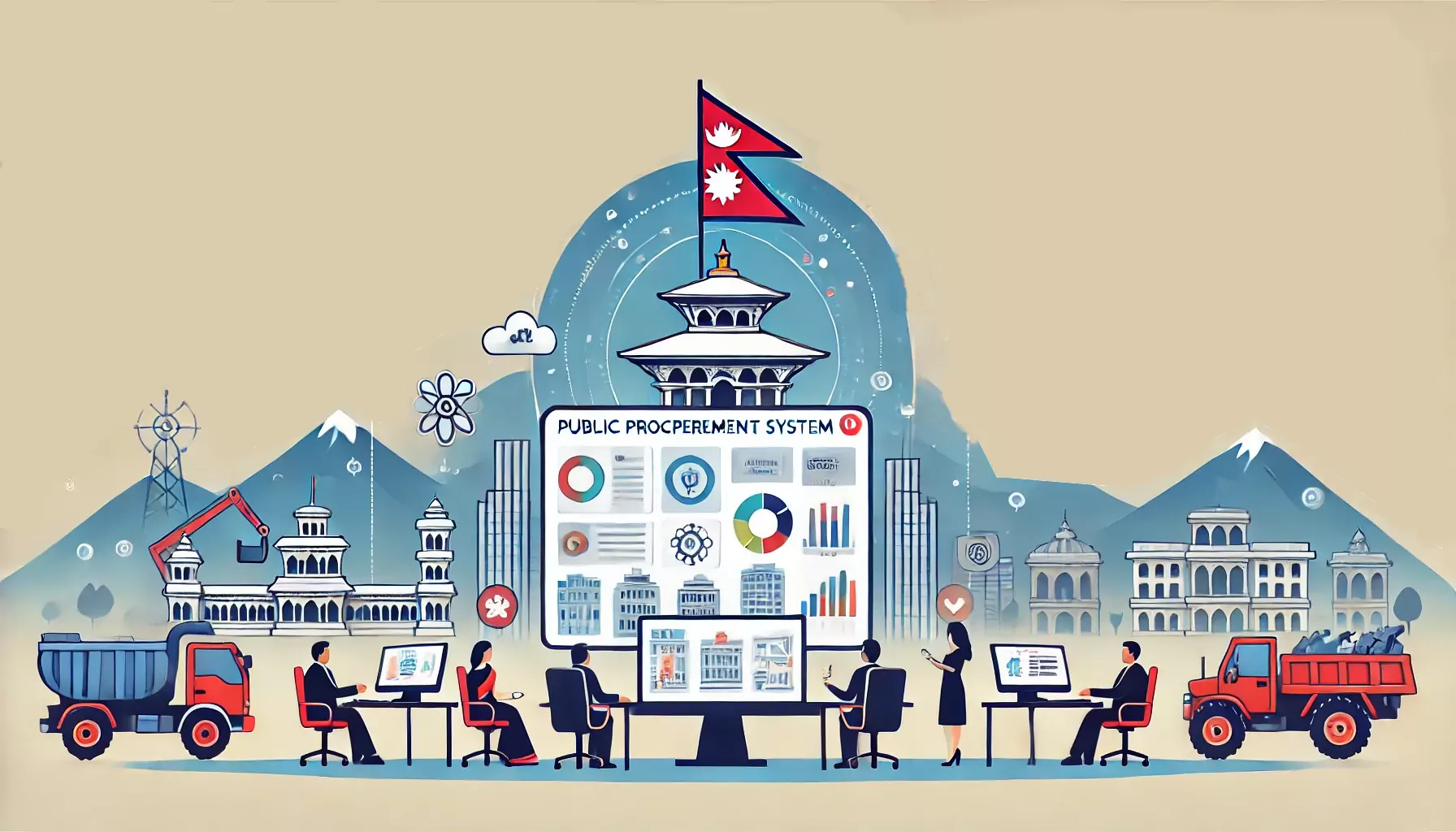Nepal's Public Procurement System: A Comprehensive Guide

Public procurement is a vital process through which governments acquire goods, works, and services from businesses. In Nepal, this system is guided by the Public Procurement Act, 2007 (सार्वजनिक खरिद ऐन, २०६३) and the Public Procurement Regulations, 2007 (सार्वजनिक खरिद नियमावली, २०६४). The overarching aim is to ensure transparency, accountability, and efficiency in utilizing public funds while fostering fair competition.
This guide explains how the procurement process operates in Nepal, the methods used, and the essential digital systems that facilitate procurement.
Understanding the Procurement Framework in Nepal
Nepal’s procurement system is structured to categorize projects based on their size and complexity. Different methods are employed depending on the financial threshold and nature of the procurement.
1. Direct Procurement (प्रत्यक्ष खरिद):
- Scope: Used for goods and works valued up to NPR 1 million and services up to NPR 0.5 million.
- Purpose: Simplifies the process for small-scale and urgent needs.
- Process: Procurement is conducted directly without formal bidding.
2. Sealed Quotations (सिलबन्दी कोटेशन):
- Scope: Applies to contracts valued between NPR 0.5 million and NPR 2 million (up to NPR 5 million for health-related goods).
- Purpose: Ensures competition while remaining simple and accessible.
- Process: Bidders submit price quotations in sealed envelopes, which are evaluated based on predetermined criteria.
3. Open Bidding (खुला बोलपत्र):
- Scope: Mandatory for contracts exceeding NPR 2 million.
- Purpose: Maximizes transparency and fairness by inviting all eligible bidders.
- Process: Bidders submit detailed technical and financial proposals, which are evaluated by a committee.
These methods ensure that procurement is appropriate to the scale of the project while maintaining efficiency and accountability.
Digital Platforms Supporting Public Procurement
Nepal has implemented several digital tools to enhance transparency and streamline the procurement process. These systems play a critical role in making information accessible to both buyers and suppliers.
Electronic Government Procurement (e-GP) System:
- A centralized platform for managing the entire procurement process, including bidder registration, tender announcements, bid submission, and contract management.
- Features: E-tendering, bid tracking, and automated evaluation processes.
Public Procurement Monitoring Office (PPMO):
- Provides policies, guidelines, and standardized bidding documents while monitoring procurement practices across the country.
- Role: Ensures compliance with regulations and offers resources to stakeholders.
Public Procurement Information Portal (PPIP):
- Facilitates transparency by publishing procurement plans, awarded contracts, and performance data.
These platforms simplify access to procurement opportunities and data, fostering greater accountability and inclusivity in the process.
The Procurement Process: Key Steps
The procurement process in Nepal involves several structured stages designed to ensure fairness and efficiency. Here’s an overview of how the system typically operates:
1. Announcement of Opportunities:
- Government agencies publish procurement notices through the e-GP system and other official channels.
- Each notice specifies requirements, eligibility criteria, and deadlines.
2. Submission of Bids:
- Interested bidders prepare and submit their proposals electronically.
- Proposals often include technical details (e.g., qualifications, methodology) and financial details (e.g., cost estimates).
3. Evaluation of Bids:
- A committee evaluates submitted bids based on compliance, technical adequacy, and cost-effectiveness.
- The evaluation process is guided by criteria set out in the tender documents.
4. Award of Contract:
- The most competitive and compliant bid is awarded the contract.
- Details of the awarded contract are published on the PPIP for transparency.
5. Contract Implementation:
- The selected supplier or contractor delivers goods, works, or services as per the agreement.
- Performance is monitored to ensure adherence to quality standards and timelines.
This structured approach promotes accountability and ensures public funds are used effectively.
Challenges in Public Procurement
While Nepal’s procurement system has improved significantly with the adoption of digital platforms and clearer regulations, challenges remain:
Transparency Gaps:
- Ensuring impartiality in bid evaluations and reducing policy manipulations are ongoing concerns.
Capacity Deficits:
- Many officials and bidders lack the technical knowledge to navigate complex procurement processes effectively.
Digital Divide:
- Limited access to digital infrastructure in rural areas affects participation and system reliability.
Complex Documentation:
- Procurement procedures often require extensive paperwork and detailed submissions, which can be overwhelming.
Enforcement Issues:
- Inconsistent application of penalties and rewards can undermine accountability.
These challenges highlight areas for potential reform and improvement to ensure a more robust system.
Sector-Specific Considerations in Procurement
Procurement processes can vary significantly between sectors. Here are some examples:
| Sector | Common Methods | Challenges |
|---|---|---|
| IT | Open bidding, RFPs | Rapid tech changes, lack of expertise |
| Construction | Open bidding, prequalification | Delays, cost overruns, quality assurance |
| Healthcare | Open bidding, emergency procurement | Supply chain disruptions, quality control |
| Agriculture | Open bidding, community-based | Seasonal timing, limited supplier capacity |
| Education | Open bidding, framework agreements | Distribution delays, lack of standardization |
Understanding these nuances is essential for effectively navigating procurement opportunities in each sector.
Conclusion
Nepal’s public procurement system is a critical mechanism for utilizing public funds effectively and driving national development. While the system offers robust frameworks and digital platforms to promote transparency and efficiency, it also faces challenges like capacity gaps, digital divides, and procedural complexities.
By understanding the procurement process, stakeholders can better appreciate how government contracts are awarded and executed. As Nepal continues to modernize its procurement landscape, addressing existing challenges will ensure greater efficiency, inclusivity, and accountability in public spending.